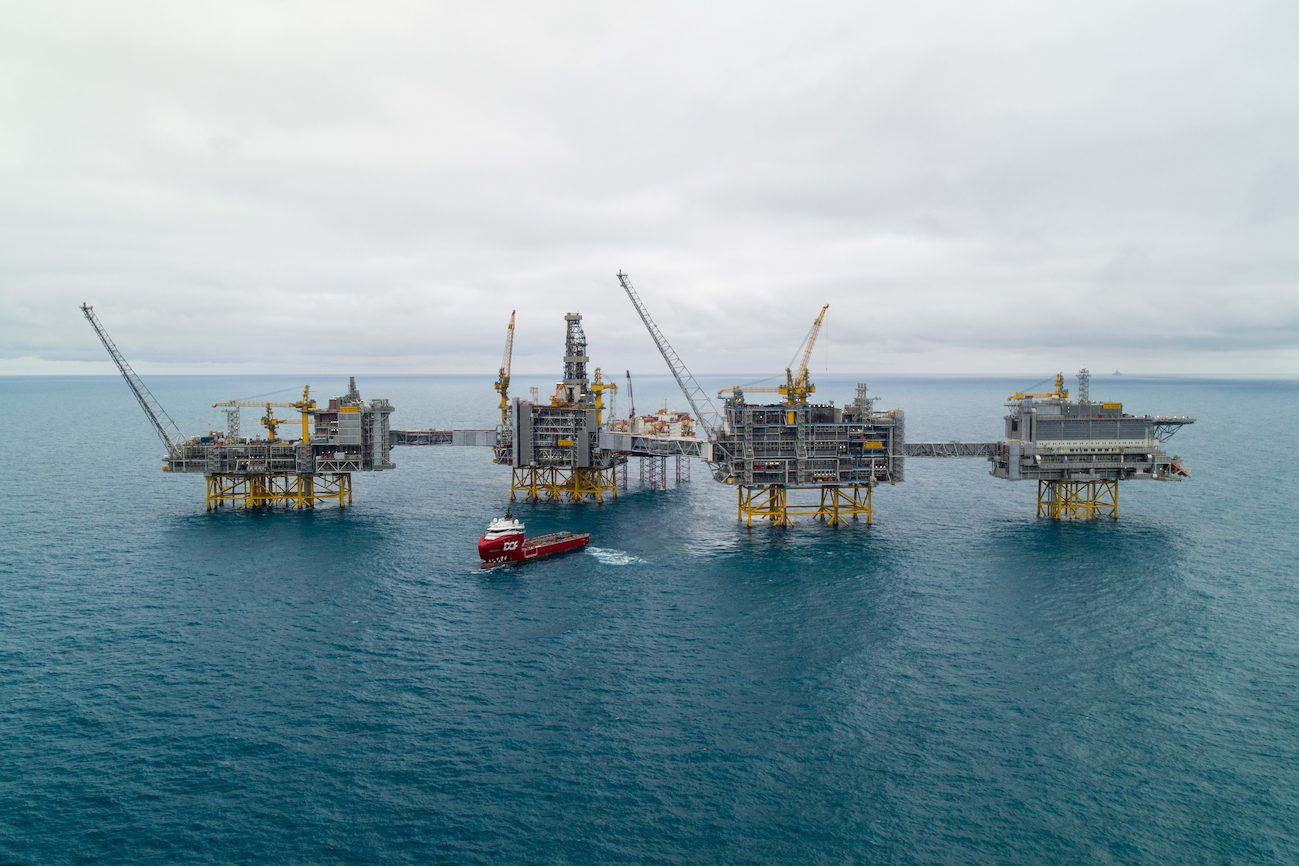Photo: Espen Ronnevik / Oyvind Gravas – Equinor ASA
By Mikael Holter (Bloomberg) –The timing of Norway’s biggest oil project in decades is a bit awkward.
Equinor ASA kicked off its massive Johan Sverdrup field, a rare mega-project in the aging North Sea, at a moment where the pressure on the oil industry and governments to act against the climate crisis has never been greater. The field is set to produce crude for 50 years, well beyond the time where the world’s greenhouse-gas emissions should be net zero to avoid warming of more than 1.5 degrees.
“It’s understandable that it could be viewed as a paradox in times like these,” said economics professor Klaus Mohn, the rector of the University of Stavanger, the country’s oil capital. “But Norway has stubbornly maintained a separation between its oil policy on one side and climate policy on the other.”
Sverdrup has already been a boon for Norway’s offshore industry, and now promises to deliver a big production boost for its owners and the country as a whole. Yet, it comes the year after Equinor changed its name from Statoil, to reflect increased investments in renewable energy, and as political debate about the post-oil era in Norway is accelerating.
Equinor anticipated the apparent contradiction on its website, with the main banner reading: “We’re celebrating the opening of the Johan Sverdrup oil field. But what about the climate?” The platforms will receive electricity from Norway’s onshore grid, dominated by hydropower, meaning each barrel of oil will generate 0.67 kilos of carbon dioxide in the production phase, compared to averages of about 9kg in Norway and 18kg globally.
Equinor and Norway have long used Sverdrup as a prime example of why they should be the last to stop producing oil, even betting that barrels produced with lower emissions will become a competitive advantage in a world where higher prices on carbon pollution will reduce demand for crude.
Emissions from the production process account for just a fraction of the life cycle of a barrel of crude. If all of Sverdrup’s oil is burned, it could produce more than 1.1 billion tons of carbon dioxide — more than 20 times Norway’s total annual emissions, based on a U.S. government estimate of how much CO2 is generated from burning a barrel of oil.
Sverdrup’s startup is a “fantastic day for Equinor and state coffers,” economics professor Knut Einar Rosendahl said on Twitter. “Not such a fantastic day for global climate-gas emissions.”
Discovered in 2010, in an area that had been disregarded by most explorers, the site started production on Saturday and is set to reach 440,000 barrels a day by next summer. That represents a 33% addition to Norway’s crude output in the first half of this year, a hike not seen since the 1980s.
It’s hard to overstate the importance of Sverdrup for its owners, the Norwegian state and the country’s entire oil industry.
Confidence about the field’s startup was key for state-controlled Equinor’s decision to kick off a long-awaited $5 billion buyback program in September, and Sverdrup will be a driving force in the company’s production growth in the next years. It also helped to transform Lundin Petroleum AB — which made the initial discovery — and Aker BP ASA into two of the most important companies in Norway’s oil industry.
With as much as 3.2 billion barrels in reserves, it’s Norway’s biggest discovery since the 1970s. In an illustration of how unusually large the field is, Aker BP considered going to court over a few decimals in ownership.
- Sverdrup Facts
Location: 160km west of Stavanger
- Size: 2.2 billion-3.2 billion barrels of oil
- Phase 1: 83 billion kroner in investments, startup Oct. 2019, max. output 440,000 barrels a day
- Phase 2: 41 billion kroner in investments, startup fourth quarter of 2022, max. output 660,000 barrels a day
- Field break-even: less than $20 a barrel
- Owners: Equinor 42.6%, Lundin 20%, Petoro 17.4%, Aker BP 11.6%, Total 8.4%
Equinor expects Sverdrup to contribute about $100 billion to Norway’s state coffers. The field’s timing was also perfect for the Nordic country: green-lighted in 2015, just after a historic collapse in the crude market, it offered a lifeline to the embattled oil-service industry, even if the market slump forced suppliers to cut prices.
For Equinor and the other owners, the timing was even better. The discount on services and equipment allowed them to slash investments by as much as 44% compared to the highest early estimates, giving the field an overall break-even price of less than $20 a barrel.
Sverdrup was originally scheduled to start production in December this year, but Equinor advanced the date to October. The field will reach maximum output of 660,000 barrels a day in its second phase in 2023.
© 2019 Bloomberg L.P

 Join The Club
Join The Club











